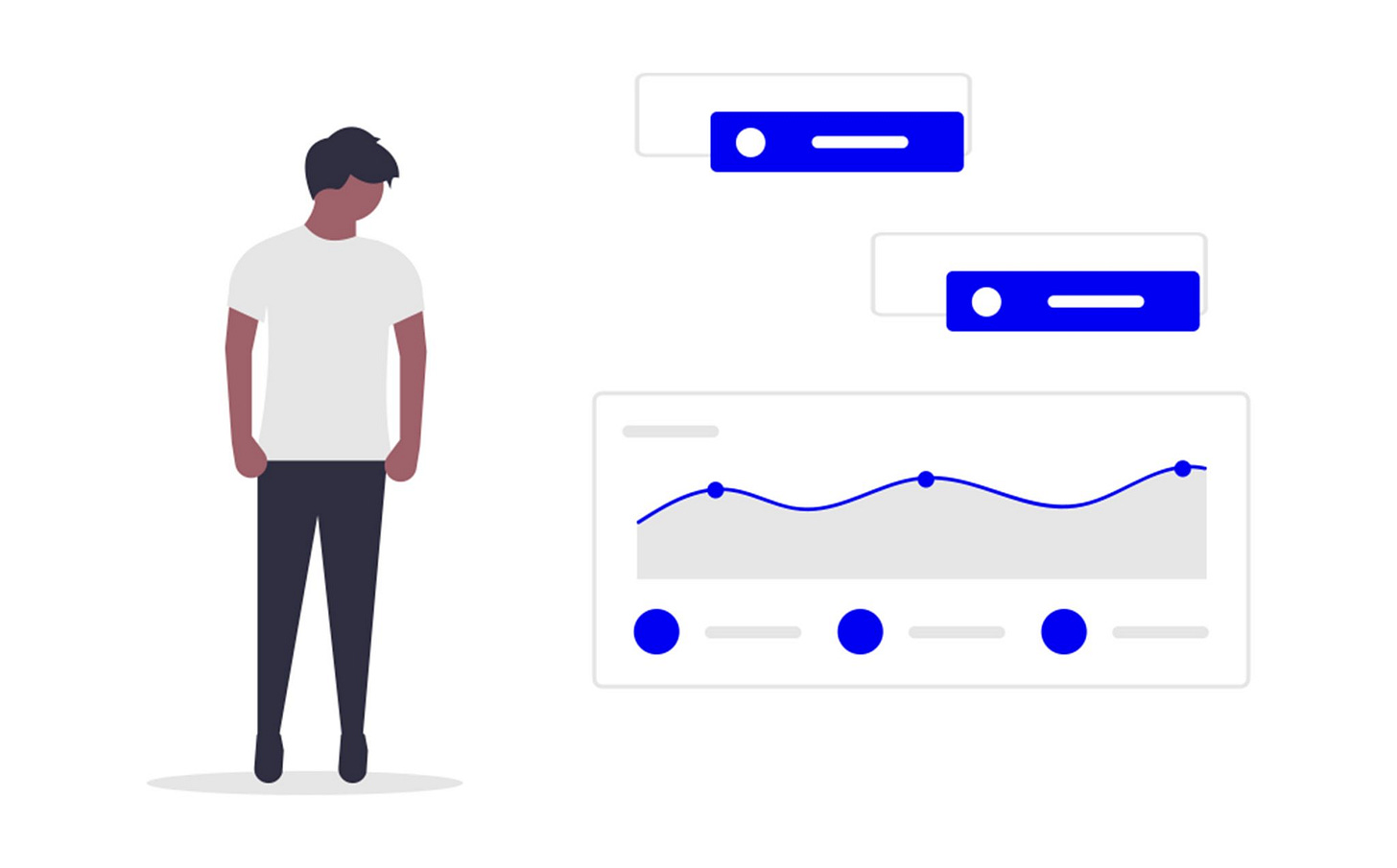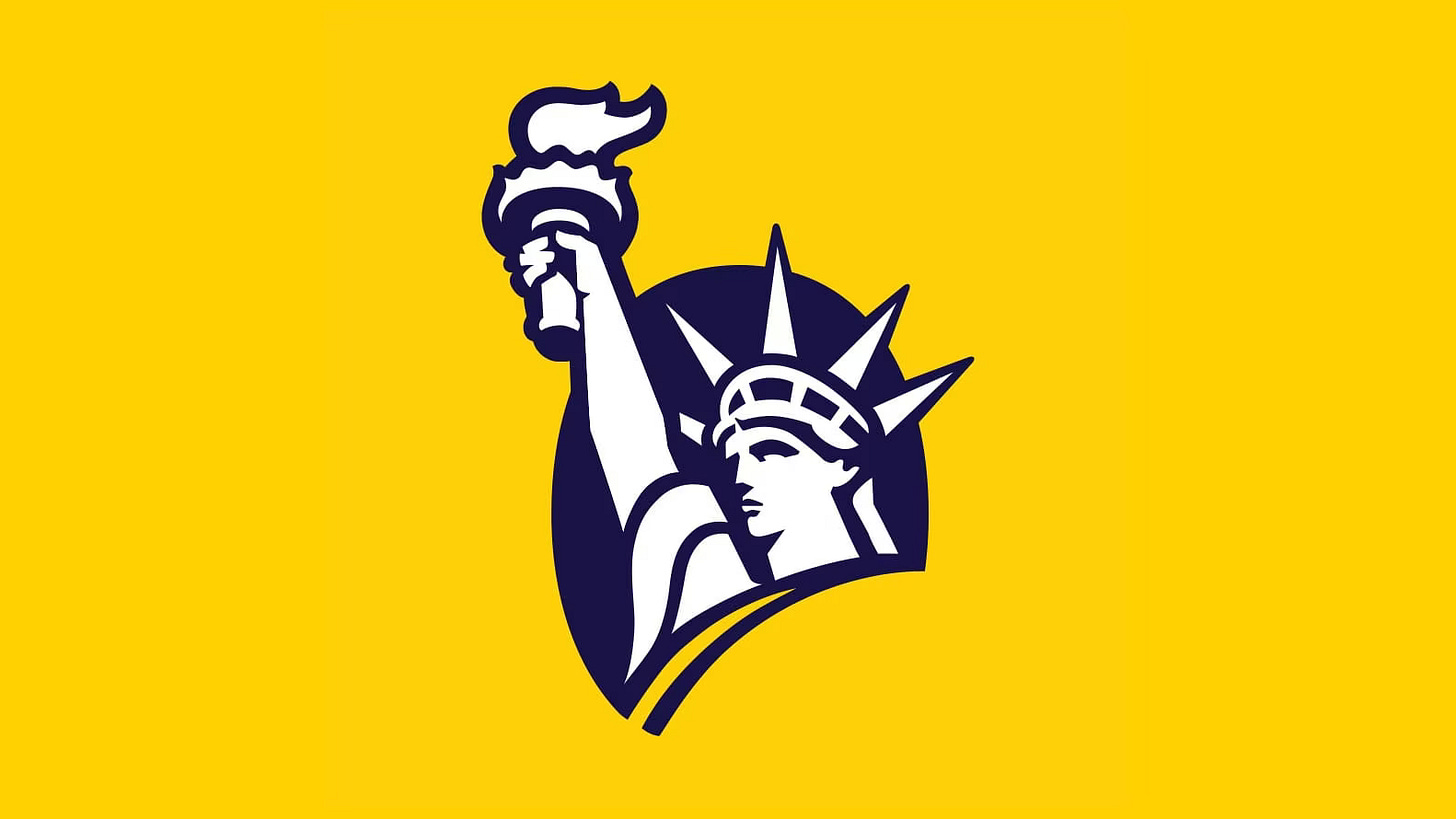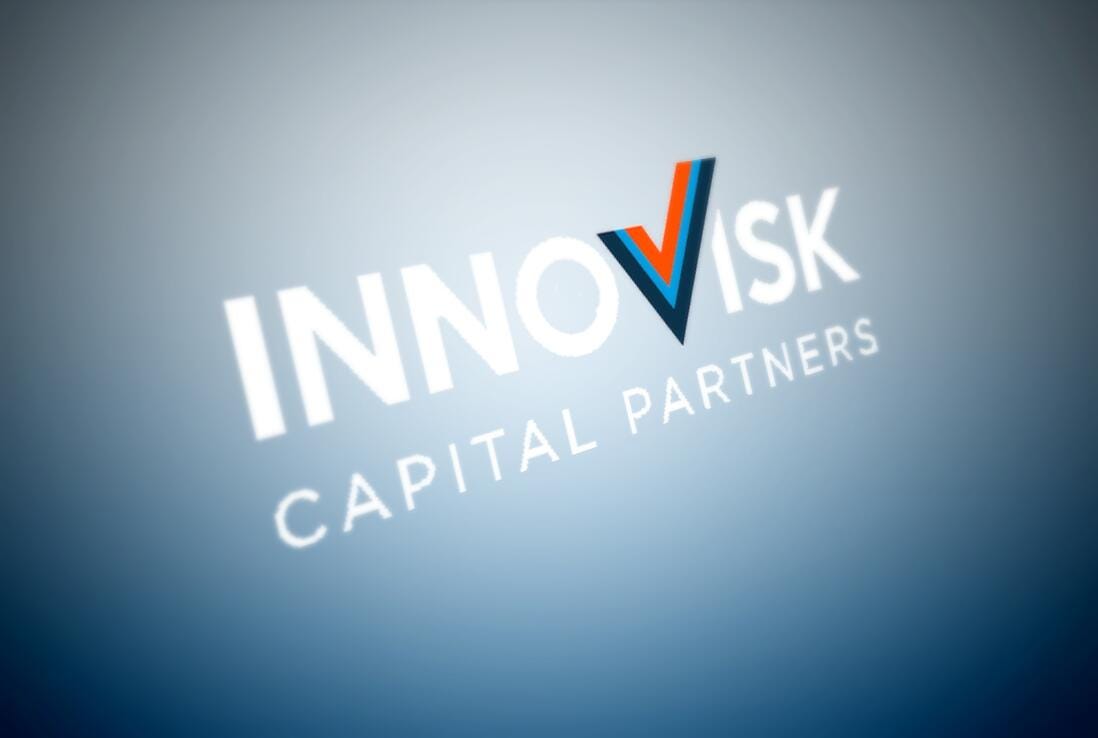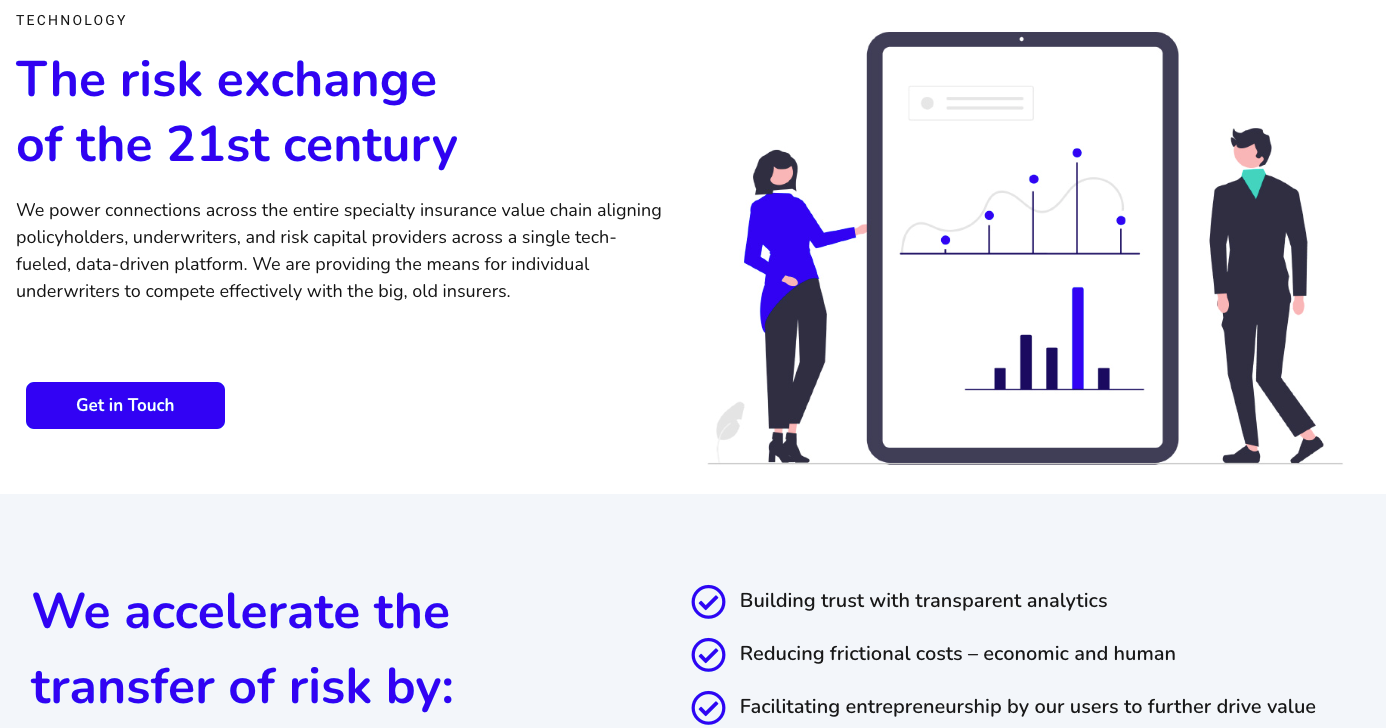The 127th episode of Datacast is my conversation with Heather Wentworth — the Chief Data Officer of Accelerant, an MGA-enabling insurtech focused on improving how risk is exchanged across the insurance ecosystem.
Our wide-ranging conversation touches on her 14-year career at Liberty Mutual Insurance, her shift from underwriting to technology at large and small organizations, her current journey at Accelerant as the Chief Data Officer, the bloated value chain in the insurance lifecycle, moving from data governance to data intelligence, insurance transformation from a tech perspective, and much more.
Please enjoy my conversation with Heather!
Show Notes
(01:44) Heather talked about her upbringing, her education, and her 14-year career at Liberty Mutual Insurance.
(06:50) Heather emphasized the benefits of her education in organizational design and management.
(08:56) Heather walked through her decision to shift from underwriting to technology and data at Liberty.
(13:55) Heather commented on her 5 years as a product manager at Crum & Forster.
(20:14) Heather described her 2-year experience as the Global Head of Technology at Innovisk (a Wills Towers Watson ).
(23:54) Heather distinguished the work environments in a startup and a large company.
(26:17) Heather recalled different data strategy initiatives she led at Brown and Brown Insurance.
(28:33) Heather explained issues in the insurance value chain and the role of data to help tackle them.
(34:17) Heather discussed her role as the Chief Data Officer at Accelerant Holdings.
(40:18) Heather brought up the data quality issues that Accelerant risk exchange helped solve.
(45:52) Heather gave advice to organizations to move from data governance to Data Intelligence.
(48:45) Heather provided her perspective on hiring data talent.
(50:40) Heather looked at the insurance transformation from a technology perspective.
(52:52) Heather talked about engaging women in technical fields.
(54:22) Closing segment.
Heather's Contact Info
Relevant Reading
Bloomberg | Boehly'sHeather's Eldridge Bets on Accelerant at $2.2 Billion Valuation
Insurance Business Mag | Accelerant: An insurtech that defies categories
Business Insurance | Accelerant establishes $175 million sidecar reinsurer
AI Times Journal | Data Intelligence is Key to Understanding our Customers – Chief Data Officer, Accelerant Holdings
Lightco | Insurance Innovators Top 100
Business Wire | Accelerant Launches the Accelerant Risk Exchange to Reimagine Insurance
Mentioned Resources
People
Book
Data Mesh: Delivering Data-Driven Value at Scale (by Zhamak Dehghani)
About the show
Datacast features long-form, in-depth conversations with practitioners and researchers in the data community to walk through their professional journeys and unpack the lessons learned along the way. I invite guests coming from a wide range of career paths — from scientists and analysts to founders and investors — to analyze the case for using data in the real world and extract their mental models (“the WHY and the HOW”) behind their pursuits. Hopefully, these conversations can serve as valuable tools for early-stage data professionals as they navigate their own careers in the exciting data universe.
Datacast is produced and edited by James Le. For inquiries about sponsoring the podcast, email khanhle.1013@gmail.com.
Subscribe by searching for Datacast wherever you get podcasts, or click one of the links below:
If you’re new, see the podcast homepage for the most recent episodes to listen to, or browse the full guest list.
Key Takeaways
Here are the highlights from my conversation with Heather:
On Her Entrance To The World of Insurance
I currently reside in Orlando, Florida, but I grew up in the Boston area. It's amusing because it all began in second grade when my teacher, Ms. Farmer, gave me a computer pop-up book. Computers were still new at that time, and I instantly fell in love with it. Ms. Farmer later went on to work at Harvard, and many of us stayed in touch with her. She was one of those teachers you just kept in touch with. We would visit her on campus, and she remained actively involved in technology. That little pop-up book in second grade holds a special place in my heart and is where my early interest in technology started.
Moving forward, my initial education focused on organizational management and design. I learned about designing organizations, business models, processes, and gained basic business knowledge with a focus on technology. Being in the Boston area, I had the opportunity to work at Liberty Mutual, a great company known for its technology and comprehensive understanding of insurance. For 14 years, I worked at Liberty, starting as an underwriter. This role provided valuable experience on the commercial side, understanding risks, and the underwriting process. Liberty is a disciplined company with a strong focus on underwriting. However, I also had the chance to be part of their early technology initiative.
As Liberty began implementing underwriting workbenches, portals, and data integration across departments, I took on different roles within the organization to gain a comprehensive understanding of the business before transitioning into technology. Looking back, this experience greatly contributed to my understanding of all aspects of insurance.
During my time at Liberty, I worked extensively on early technology platforms that are still utilized today. These platforms have been upgraded to newer technologies, but they continue to provide excellent solutions for underwriting. Additionally, Liberty was expanding its international division, venturing into specialty insurance, which was new to me at the time. I was part of the team that helped grow Liberty International Underwriters (LIU), which focused on commercial specialty lines. This role involved extensive travel worldwide, building technology solutions for risk management, underwriting, claims, and program business. This experience was invaluable, especially in the MGA space that Accelerant currently supports.
I have been involved in various projects, including developing a risk management platform for pipelines and wells in the Gulf of Mexico, where I worked alongside underwriters and risk engineers. This goes to show that insurance is not just about producing policies; there is a fascinating side of the industry that requires effective risk and underwriting technology. Liberty provided me with extensive learning opportunities, and the travel experiences were incredible. However, as time went on, I realized that constant international travel was becoming too much for me.
Subsequently, I took on the role of the first data strategy position for Liberty's Commercial Markets. This effort laid the foundation for implementing data strategy, including basic master data management and data governance. It was a significant milestone in my career.
On Her Education in Organizational Design
I believe that many tech and data breakdowns occur due to issues with the operating model and sometimes the business model, right? Therefore, these aspects need to be changed.
For me, having the ability to focus on these areas and design them well has been a great opportunity to utilize my skills at Liberty and other companies. This has been a real differentiator because at an insurance company, for example, while you can implement the latest technology, a significant portion of the work involves core processing.
Having a background in structuring processes and understanding the benefits of left-shifting things has been invaluable. The more we can shift left and eliminate waste, the more important it becomes. Otherwise, we end up automating unnecessary processes and potentially polluting or over-transforming our data. It's essential to capture data effectively. This knowledge has been extremely valuable to me.
Another important aspect of this track is psychology and understanding the cultural side of things. This foundation is beneficial for any career path you choose, but particularly in tech and data, it is crucial to have an understanding of people and culture that goes beyond the operating model.
On Shifting to Technology From Underwriting
At Liberty, it is crucial for anyone working in technology and data to have the opportunity to understand the business. Without that background, you may not solve the right problems, and your creativity may suffer.
For me, this was extremely important. The evolution of my career was based on where I was at the time. The insurance industry is known for lagging behind in technology and data. Even when I started my career, I was used to using technology, but on my first day, I was given a calculator, a stack of paper, and a blue coal pencil. This was just 15 years ago, not ancient history.
The blue coal pencil was used to write out information on a policy document, such as names, addresses, and policy limits. It would then be sent to a typing department. The blue pencil was used because it would not be picked up by the copier, making the process efficient. I immediately thought of automating this process since it seemed outdated.

I kept finding ways to automate using new technology, which led to me being moved into a technology role where I could reshape our work. This was a significant turning point for me. As I moved into different industries, such as marine energy and construction, it became essential to understand insurance and the complexities of those industries.
This required understanding the risks involved and the technology needed to provide effective solutions. I worked closely with my business partners, leveraging my background as a former business person. Together, we created amazing risk engineering solutions and improved efficiency. We were able to quickly adapt our automation blueprint when entering new countries and tailor it to specific regional needs.
Back then, there were few people who had both technical skills and a strong interest in the business. However, the newer generations entering the industry today are more tech-savvy, having grown up with smartphones from a young age. They come in with a stronger focus on the business, but also a desire to fix and improve outdated systems. This shift is noticeable in many companies today.
On Being A Product Manager at Crum & Forster
The majority of my work at Crum was focused on transformation. One aspect of this transformation was implementing the product side of the new agile model, which involved bringing in product owners and emphasizing product discipline. Another aspect was reviewing and optimizing processes and systems in all departments, along with some organizational design. This work was similar to what I did at Liberty, but on a larger scale at Crum.
During my time at Crum, I was also part of an innovation group formed by Fairfax, the parent company of Crum and Forster, among others. This group provided a great opportunity for collaboration and thinking outside the box. Both Crum and Fairfax embraced innovation in a warm and positive way.
In addition to my day job, I had a business idea when a friend of mine was setting up their own traveling bicycle repair business. While looking at their Square account setup, I noticed the three things Square helped small businesses with: start, run, and grow. This inspired me to pitch a business case called "Fairfax and Square," which involved embedding insurance products in the Square experience. Although it was ahead of its time, we received internal support and even connected with Jack Dorsey and his team. Ultimately, the concept didn't move forward due to other priorities, but it was a valuable experience.
Looking back, I realized that I could have pushed harder to make it happen. We attempted a similar venture with another company, but the technology wasn't ready yet. This taught me the lesson of not giving up too soon.
When evaluating companies and making decisions nowadays, especially now that I am in a different stage of my career, it becomes apparent that it's easy for companies to praise certain solutions and directions. However, there is a significant level of uncertainty and reluctance to invest and push for change. As a result, many companies choose to stick with their current practices. This is an area where companies, particularly in the insurance industry, have made progress. They are starting to anticipate the future and take necessary steps. However, there are still many companies that are lagging behind. As the industry welcomes new talent, I believe this situation will gradually improve over time.
On Serving as the Head of Technology at Innovisk
I served as the global head of technology for InnoVisk, which was a Willis Towers Watson company. This was my first startup experience, and I couldn't pass up the opportunity due to my passion for innovation. InnoVisk was a platform that catered to managing general agents, specializing in independent specialty underwriting companies. It offered a tech and data platform that enabled digital distribution and automated underwriting.
With InnoVisk, we aimed to streamline the underwriting process by reducing the number of questions asked to customers. Instead of the typical 30 questions, we were able to provide a quote and purchase option with just one question. This presented an exciting opportunity for me to innovate independently, as there was already a global head of technology in place. Initially, I joined to lead the product and handle operational design but eventually took charge of technology as well.
We embarked on a platform redesign that yielded impressive results for companies like Vendotti, one of our managing general agents. They were able to provide an exceptional online experience for their brokers and customers. This redesign also allowed us to revamp insurance products.
One of the fascinating aspects of the platform was our utilization of third-party data, which enabled us to ask fewer questions while improving underwriting accuracy and speed. We had an excellent data infrastructure in place from the beginning, and this was crucial to me.
It was important to not only focus on the front end but also manage the pipelines and transformations. This was the first time I had the opportunity to design the front end and capture first-party data from scratch. In the insurance industry, only brokers typically have access to first-party data, unless the insurance company sells directly to customers.
Leading this platform for two years was a rewarding experience. I made necessary revisions to the initial attempt and successfully executed the roadmap.
On Enjoying The Startup Environment
I have always taken on a lot of work, and I truly enjoy it.
For me, the intensity of working at a startup was not that different from what I would experience at a big company. However, the freedom and lack of bureaucracy, as well as everyone working towards the same goal and being so close to the end product and delivery, made a significant difference. In the beginning, our startup was small in size.
The large companies I had worked for before were also great. They were like little big companies with really good cultures and plenty of opportunities. However, at times, it felt like I was far removed from the true decision-making process, and there were many steps and hierarchies to navigate. The biggest difference, therefore, was the freedom to make choices and good choices, as well as the ability to execute at a faster pace. In a startup, you can set the pace.
On the other hand, when you join another company, you can try to move a little faster, but it's unlikely that you'll make much progress if the rest of the culture doesn't move that way. This was a positive aspect for me. Additionally, I had the opportunity to build a team with diverse individuals who shared a similar mindset in terms of work approach and our goals for what we were trying to achieve.
On Leading Data Strategy at Brown and Brown Insurance
Brown and Brown is an excellent company that specializes in retail, broking, wholesale, and national programs. As a broker, they have access to first-party data, making them a valuable player in the insurance industry. However, I believe that the brokering space is currently underutilizing this data and has room for innovation.
When I joined Brown and Brown, I saw an opportunity to work with a company that was advancing and innovating in the brokerage space. They had all the necessary components and a strong presence in the front end of the value chain. My initial role was focused on digital distribution in national programs, similar to my previous experience with a startup at Willis.
Shortly after joining, I took on the role of data strategy, where I had the opportunity to work on the enterprise data strategy and delve deeper into the wholesale brokerage space. Brown and Brown is well-positioned in all these areas, making it an ideal company for innovation.
In addition to the appealing opportunities and goals aligned with my own, I also consider company culture when choosing where to work.
On The Value Chain of An Insurance Pipeline
I'll start by saying the value chain is problematic. It's bloated and inefficient. If you're interested, you should look up our CEO, Jeff Radke, who has done several podcasts on the state of the value chain. Unfortunately, the customers of insurance suffer because of it. Let me explain how the value chain works, starting with the customer and using the broker as an example.
In the personal line space, many people can buy their own auto insurance without the need for a broker. However, in commercial insurance, using a broker is still the norm because of the expertise required.
So, the customer goes to the retail broker, who then approaches an insurance carrier. The insurance company offers products, and there are also specialty underwriters, known as MGAs, who can underwrite and produce products on behalf of other insurance companies.
Sometimes, the retail broker needs to involve a wholesale broker who can access different markets, such as excess and surplus. The wholesale broker then approaches insurance companies and specialty underwriters.
Reinsurance is also involved in this process, but I won't go into detail about that. There are many aspects to insurance beyond the retail broker sitting in an office and providing products and quotes based on the needs of the customer.
At each point in the value chain, everyone takes a cut, which has made the process more complicated than necessary. Insurance used to be about matching risk with capital, but it has become convoluted over time.
Leading brokers like Brown and Brown have both retail and wholesale divisions, as well as their own specialty underwriters for various products. This is common among the top brokers.
When it comes to data, retail brokers don't simply input information into their system and use APIs to generate quotes. Insurance companies have established portals for their products, which means brokers have to key in the same information multiple times across different portals to get quotes and products.
This inefficiency is a challenge, and some brokers even sacrifice key data in their own system because it takes too long to input information into insurance company portals. They only capture the data when they have finalized the coverage they are moving forward with. This creates opportunities for improvement in the industry and makes data a valuable asset.
On Becoming the Chief Data Officer at Accelerant Holdings
At Accelerant, we empower specialty underwriters. These companies are not full-stack insurance companies, but they excel at underwriting these products. We help them grow profitably through our platform, offering three key things. First, we provide analytics services, which many of them can't afford to staff data science teams for or access expensive third-party data. Second, we offer expertise in various areas, such as underwriting, claims, technology, and data, at no cost to them. Lastly, we provide a five-year capacity commitment, giving them peace of mind compared to insurance companies that operate on a year-to-year basis.
Our business model is different from traditional models in that we don't underwrite or produce our own products. We have a team of underwriters who support our members. As the Chief Data Officer, my focus has been on data intelligence, including data quality, governance, and data management. This is crucial for producing analytics, managing portfolios, and fulfilling regulatory obligations. We have implemented an advanced data intelligence practice, leveraging machine learning to ensure accurate and usable data. We have cataloged, defined, and classified all our data points and use machine learning to run data quality checks throughout our processes.
With this approach, we have achieved remarkable results and have been able to quickly implement and operationalize our data intelligence. We can now assess data quality scores by region, category, and for our members and claims data. We have observed positive correlations between data quality scores and member growth. When data quality scores are higher, members tend to underwrite better and experience better growth. These data quality scores not only confirm the accuracy and integrity of our data but also help us detect issues that may go unnoticed by humans in the insurance industry.
On Fixing Data Quality Issues
Some examples are quite basic. When receiving data from our members, we can easily verify address information using various sources. However, other data points are more challenging. Some third-party data sources do not exist for certain data points. For instance, let's take the example of a name field. We receive the insured name, which could be "ABC company" or "Heather Wentworth," for instance. Since it's a text field, it is difficult to put edits on it. Although we can ensure that it contains text, verifying its accuracy requires numerous sources, especially when dealing with global data.
One of the benefits of machine learning is its ability to profile data. For example, we once had a situation where a member accidentally entered a policy number in the name field. Instead of seeing "ABC company," we were seeing "AC AC 7-etc." Rather than processing this erroneous data downstream and disrupting our reports, our machine learning algorithms detected the anomaly. It recognized that the shape and behavior of the data were different from what we usually observe. By analyzing other fields in the database, it identified the entry as a policy number. This case demonstrates how machine learning can handle situations where the expected data is missing, making it difficult to adjust the schema and proceed.
Another example is claims leakage, a significant issue in the industry, estimated to cost around 30 billion dollars per year. Duplicate claims are a part of this problem, as they can lead to inaccuracies in reserving and payments. Through our collaboration with various third-party companies, we discovered that they sometimes modify the policy number to fit their own systems. This can involve trimming or adding digits. While it is possible to code for such variations, our platform encounters numerous unique scenarios. Therefore, we have leveraged machine learning to address this challenge.
When considering issues related to voids of lending data, payment settlements, and other similar problems, machine learning proves to be a valuable asset. It offers advantages in both the claims and payment spaces, especially when integrating and managing data from third-party sources beyond data quality management.
On Moving From Data Governance to Data Intelligence
When companies are starting out, especially if they are unfunded, the first priority should be funding data intelligence instead of data governance. Investing in data intelligence will help companies progress faster and is crucial. While it may not be easy, it is easier than the traditional approach of data governance.
There is no technological constraint preventing companies from adopting data intelligence from the beginning. However, consulting firms often lag behind in coaching companies on this because many companies are reluctant to make the necessary investment. Instead, they start with a large number of data stewards using Excel to define business terms. After five years, they end up with an Excel glossary that only covers one department, resembling the Oxford dictionary. This approach does not yield progress and fails to build a data-driven culture. After all, who wants to spend their time writing an insurance dictionary instead of focusing on their actual job?
Fortunately, there are alternatives. We purchased a set of insurance terms and tailored them to our needs, taking only five minutes instead of five years. Implementing the technology and connecting it, regardless of whether you are on legacy systems or not, has become much easier due to technological advances.
My advice is not to promote a data-driven culture by requiring people to leave their day jobs and fill out Excel spreadsheets. Instead, consciously invest in data intelligence technology, which will significantly accelerate and improve progress toward all organizational goals, making many people happy.
I have never met a business person who didn't want better data utilization and improved data usage. It is not true that the insurance industry is unwilling to use data, contrary to popular belief.
On Hiring Data Talent
I believe there are two aspects to consider when it comes to insurance. Firstly, it can be challenging to find individuals who possess a deep understanding of data intelligence. Therefore, it is valuable to actively search for and partner with such individuals, if possible, or seek consultancy services.
Secondly, there is a combination of attracting skilled professionals and nurturing talent internally. In our case, we converted professionals from various roles, such as underwriters, claims handlers, financial analysts, and privacy regulation and compliance experts. These individuals not only possessed the necessary expertise but also had a strong affinity for technology. They proved to be excellent data product owners, a slightly distinct role sometimes referred to as stewards. By providing them with data training, we were able to cover a wider range of responsibilities more efficiently, as opposed to having numerous inexperienced individuals attempting to handle data simultaneously.
As a result, our progress accelerated significantly. We achieved record-breaking implementations within a short timeframe, surpassing the norm for most companies. Independent consulting firms and our technology partners have confirmed that what we accomplished typically takes five years for other companies to achieve.
On Insurance Transformation
I believe that it is not sufficient to only deliver technology. Many companies solely focus on getting the next system out there. However, they also need to prioritize data, as it requires a different discipline. The culture of insurance at these companies often receives blame for this issue.
Contrary to the belief that people are resistant to change, I think that many individuals are actually leaving firms and joining more tech-enabled and data-driven companies like Accelerant. Therefore, companies should aim to deliver not only technology but also excellent technology and data solutions.
This requires more investments in these areas. While there is often a strong emphasis on efficiency, there comes a point where we must ask ourselves if we can underwrite and handle claims better. By doing so, we can ensure greater satisfaction among customers. This shift is significant because the pandemic, despite its faults, has made society more tech-savvy.
I believe this has served as an accelerator for innovation in the insurance industry.
On Engaging More Women In Technical Fields

To encourage individuals to pursue their interests, I have found that age does not matter. However, in this case, I will focus on fourth graders.
Some children love fashion, some love cartoons, and some love games. Even at a young age, these interests often persist into adulthood. It is important to find a field that truly interests you and explore the technology and data within that field. This has been my personal path.
I am passionate about insurance, but I have also noticed that when girls are engaged in something that truly interests them, their creativity and engagement improve. They are not limited by boundaries because they genuinely enjoy what they are doing and are able to innovate.
I believe that most people enjoy innovating and creating their own things.




















